Part 1: Light Meters and Color Meters — Their Roles and Why They’re Essential On Set
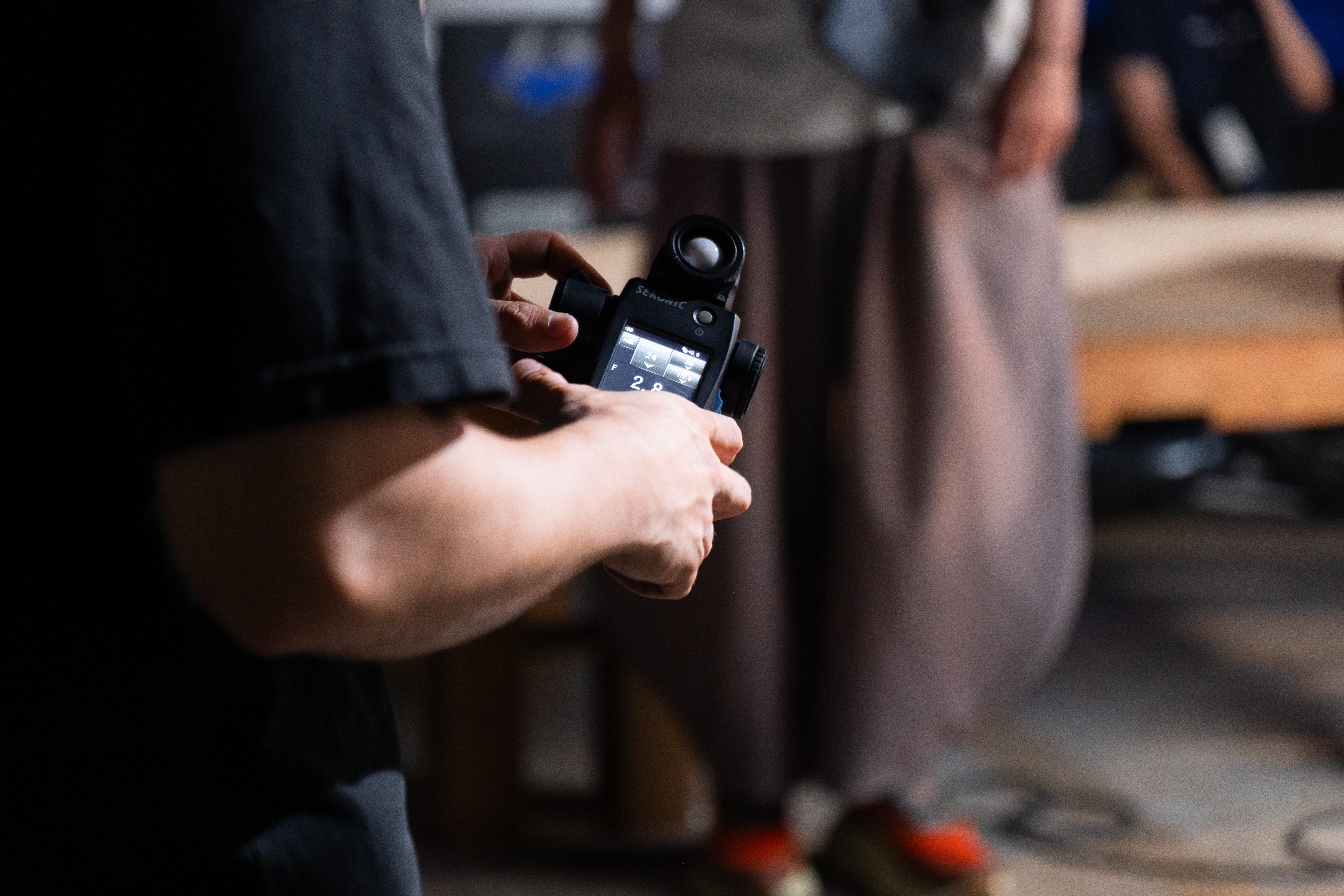
Film and video production is a collaborative effort involving directors, cinematographers, gaffers, DITs (Digital Imaging Technicians), and many other professionals.
What keeps everyone aligned on set is the ability to share the numerical values of light and color.
In this six-part series, we’ll explore how exposure and color meters are being used as indispensable tools for quantifying light in today’s cutting-edge production environments.
In this first installment, we’ll take a closer look at SEKONIC’s two core tools—the light meter and the color meter—explaining the difference between their functions and why professionals continue to rely on them today.
The Value of Measuring Light and Color in Numbers

The camera and lighting crew discussing exposure on set
With the rise of digital cameras and the dominance of LED lighting, have we become more reliant on judging exposure by eye?
Phrases like “a little brighter” or “a touch more blue” can be interpreted differently by team members on set.
But when we say “set exposure to F4.0” or “adjust color temperature to 5600K”, the numbers leave no room for misinterpretation. Anyone who measures will arrive at the same result.
In other words, quantifying light and color creates a shared language and a common goal that everyone on the team can align with.
And by recording those values, the same lighting setup can be faithfully reproduced on another day or during reshoots. This repeatability and reliability are exactly why light meters and color meters remain indispensable on professional sets.
Light Meters and Color Meters
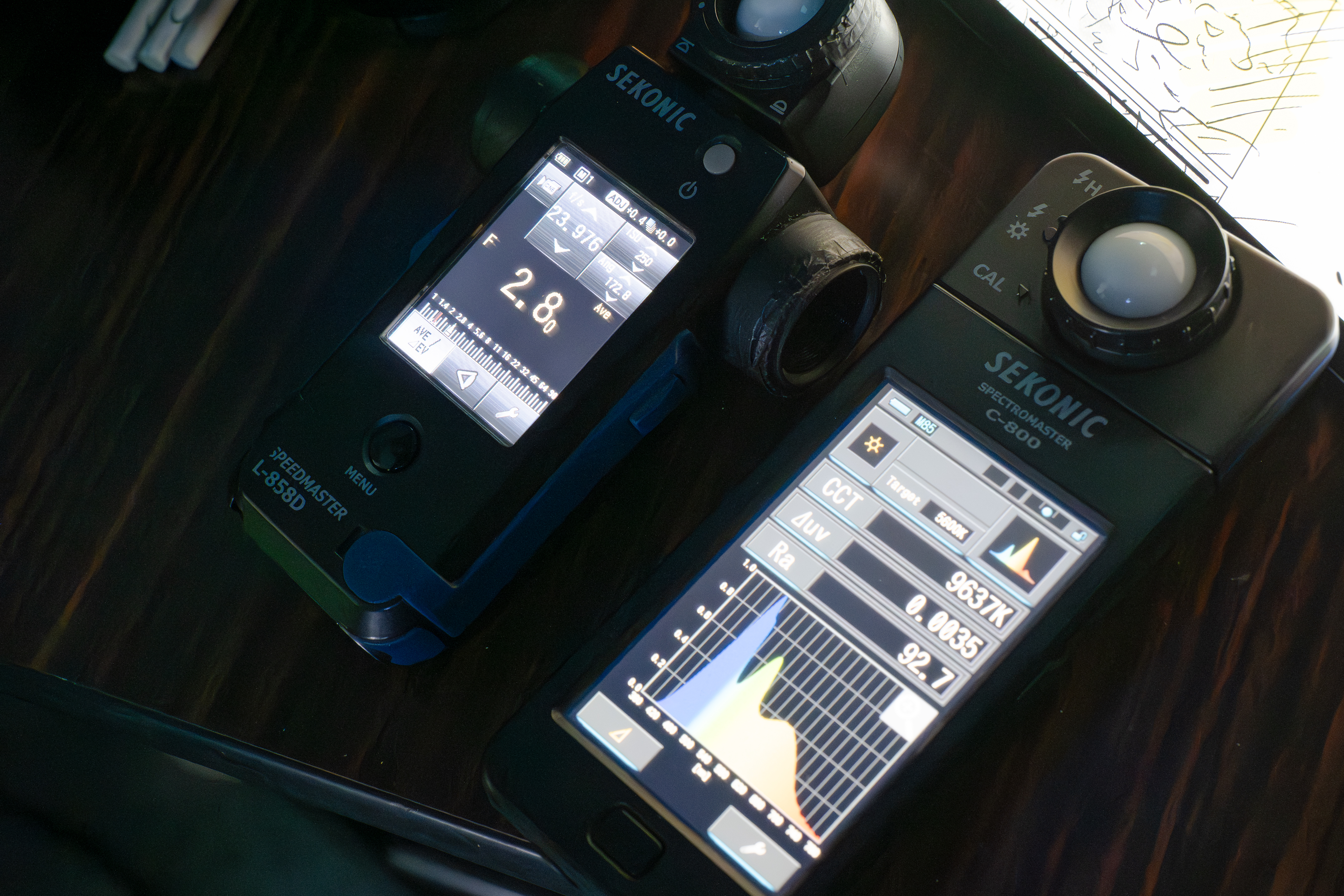
Light Meters — Measuring the Quantity of Light
A light meter translates the amount of light falling on a subject into numerical values.
Beyond helping determine camera settings (aperture, shutter speed, ISO), it also manages lighting ratios to shape the overall tone of a scene.
It serves as a common language between the director, cinematographer, gaffer, and the rest of the crew responsible for lighting. For example, if the director remarks, “I like how dark and underexposed this scene looks,” The team can note the numerical values of the camera settings in relation to the metered settings to maintain this look, while working with the DIT to make sure enough detail is captured.
-
STUDIO DELUX III L-398A
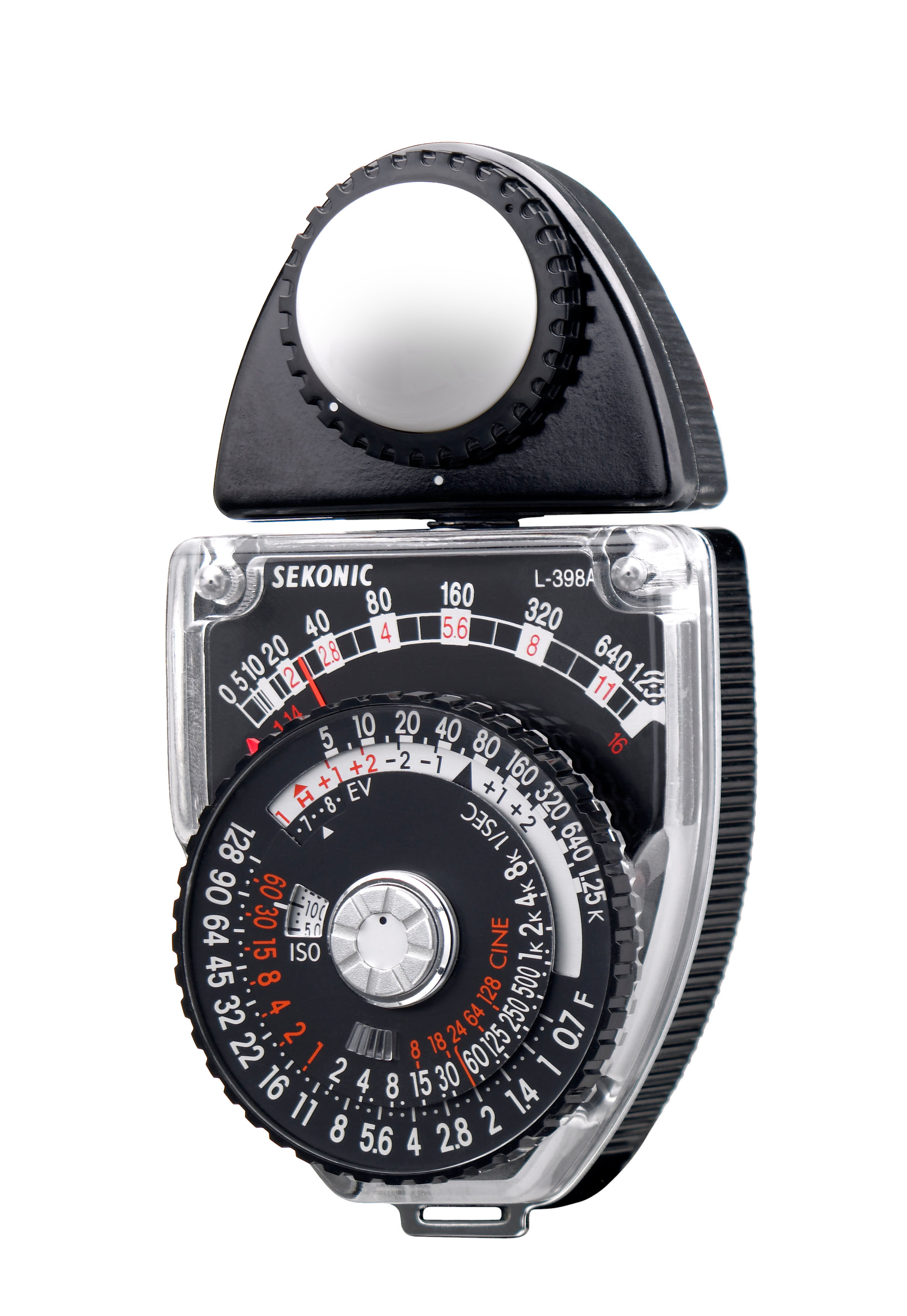
Trusted by generations of filmmakers, the L-398A is a classic analog light meter that requires no batteries. Exposure combinations are displayed at a glance with cine scales designed for motion picture and any ambient light readings.
-
FLASHMATE L-308X
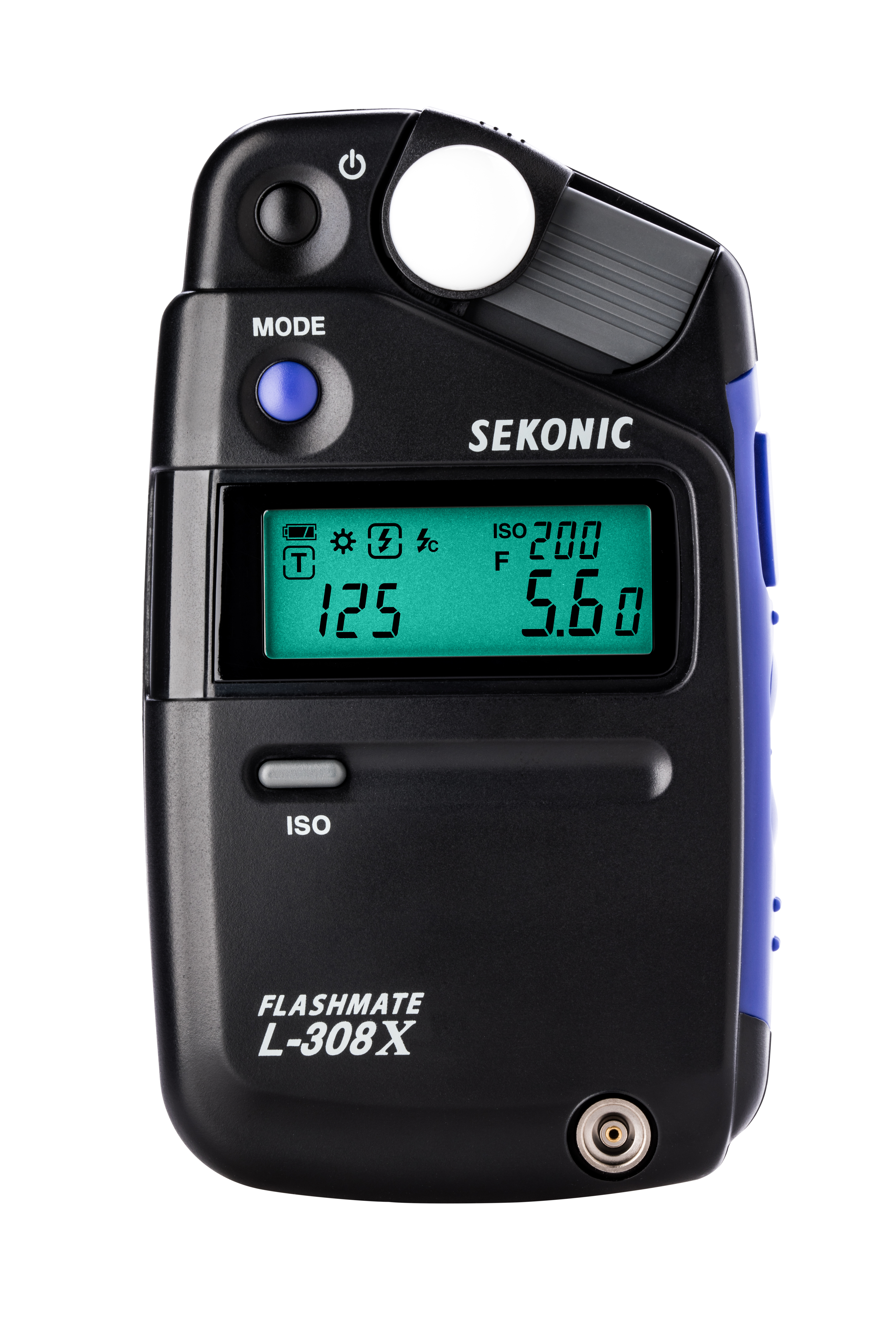
Compact and intuitive, the L-308X is a versatile digital exposure meter for today’s hybrid creators. With Cine Modes for use with common shutter angles and frame rates, and HD Cine modes for video cameras without shutter angles. The L-308X is also a favorite for photographers using both flash and ambient light.
-
LITEMASTER PRO L-478D
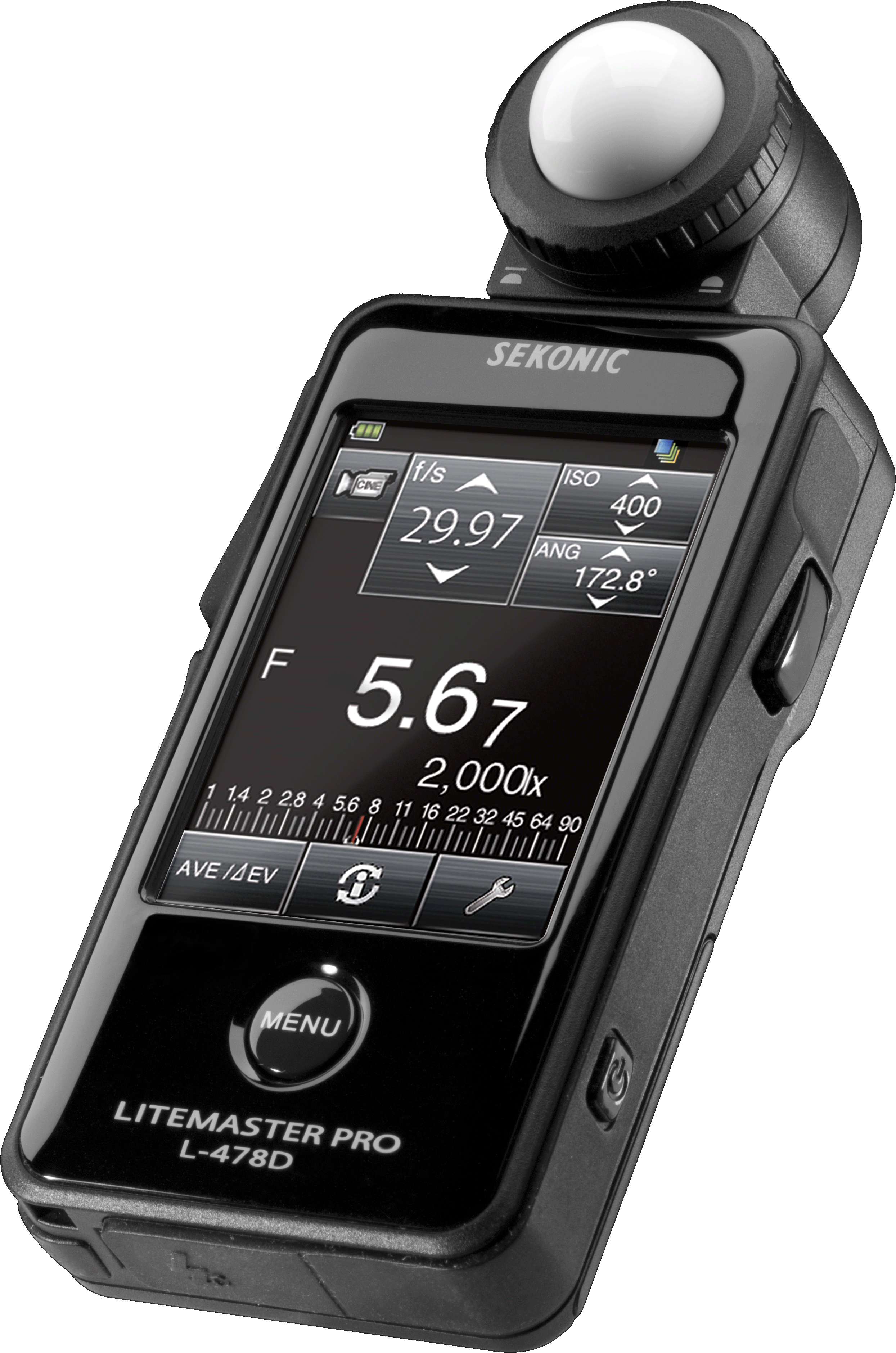
A compact meter with an intuitive touchscreen interface. Versatile for both photography and cinematography, with spot metering capability when fitted with an optional 5° viewfinder. The L-478D is a great step-up for cinematographers who need custom frame rates and shutter angles.
The L-478D introduces an intuitive touchscreen interface and broad versatility for cinematographers and photographers alike. With an optional 5-degree spot meter attachment, customizable frame rates, and shutter angle settings, it offers precise control for advanced shooting demands in a compact format.
-
SPEEDMASTER L-858D
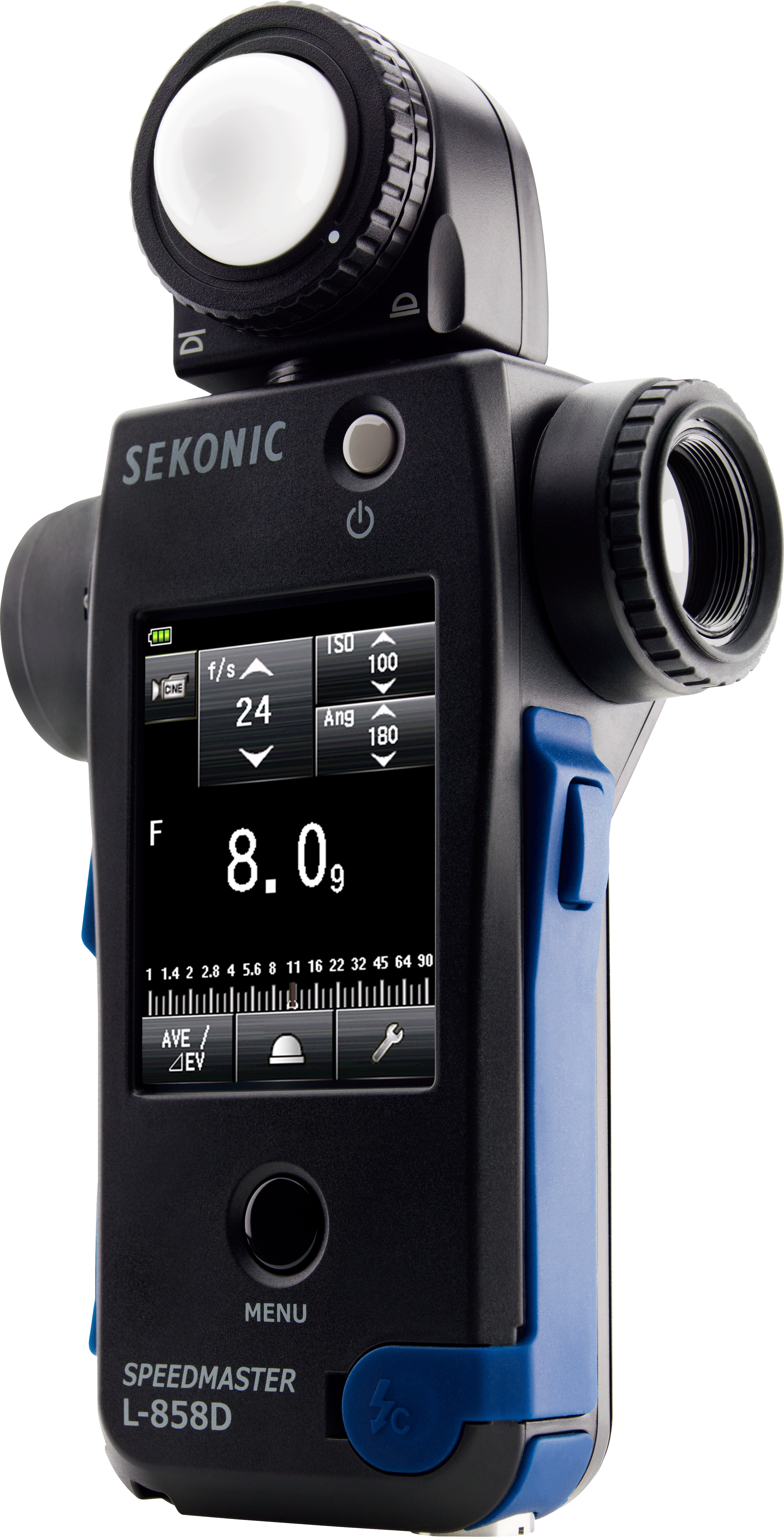
As Sekonic’s flagship model, the L-858D delivers cutting-edge performance with 1° spot metering, exceptional sensitivity giving you 3 stops more in incident and 2 stops more in reflected light measurements. It has become the go-to light meter for professional cinematographers and photographers alike.
A key advantage of light meters is their ability to evaluate light that isn’t visible in-camera—information that histograms and waveforms cannot fully reveal.
Color Meters — Measuring the Quality of Light
On today’s sets, where LEDs, HMIs, and many other sources coexist, accurately matching color temperature and being able to see spectral inconsistencies is crucial.
It's rare to set up a production with lighting fixtures from just one manufacturer.
The advent of full-color LED lights has greatly expanded creative possibilities, but it has also made it more common to intentionally deviate from standard color temperatures for stylistic expression.
This is where color meters come in—providing objective data on the characteristics of light.
-
SPECTROMETER C-800
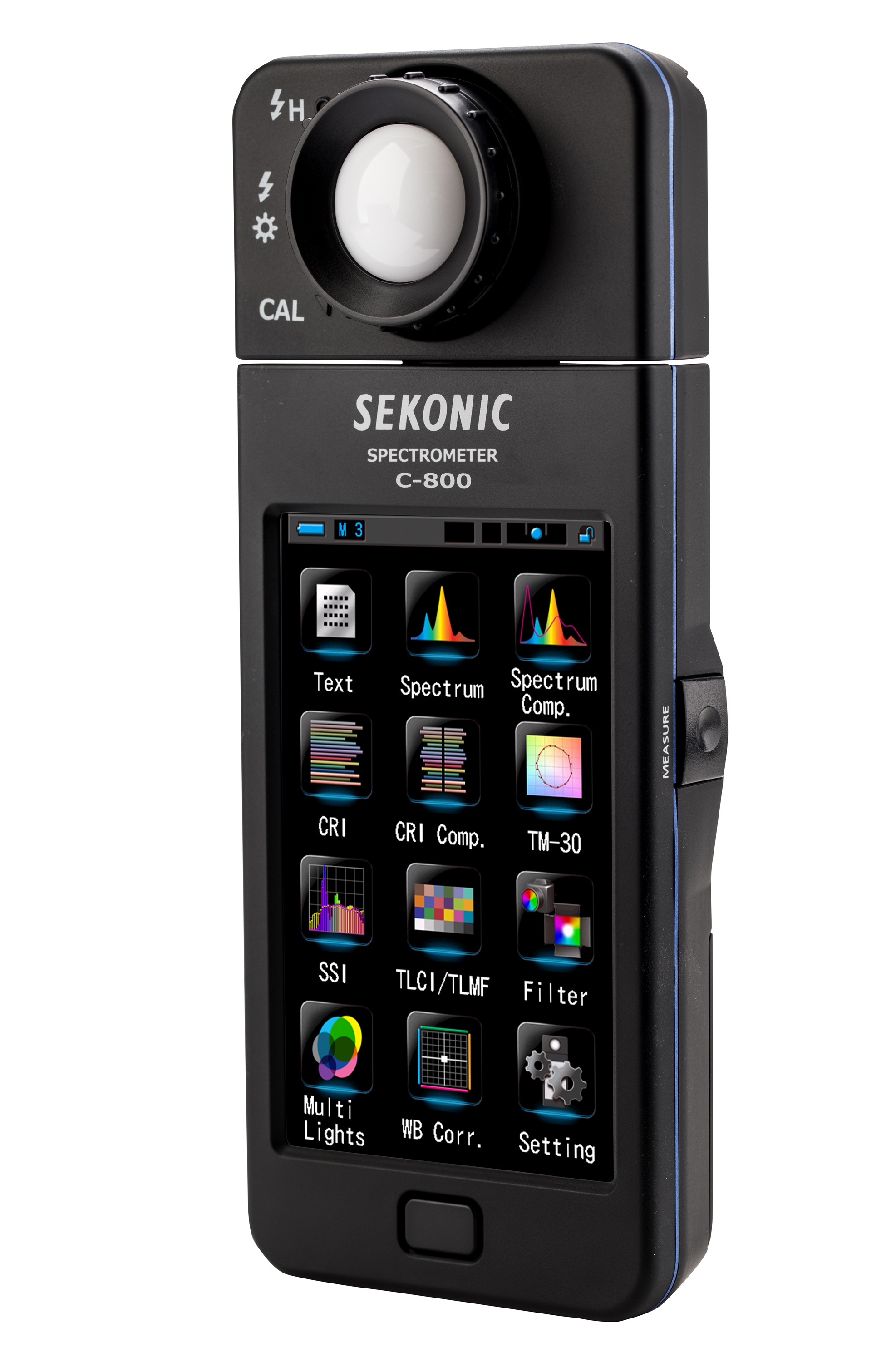
Beyond color temperature, it measures Delta UV, Green & Magenta Shifts, Lux, Footcandles, x,y chromaticity coordinates, Hue & Saturation, CRI, TLCI, TLMF, TM-30-18, and SSI. By identifying subtle mismatches, it enables multiple fixtures to blend seamlessly and recreate the intended color space.
Even when lights appear to match by eye, a camera may reveal unwanted color shifts. A color meter quantifies these differences and makes them visible in numbers.
Dynamic Range and the Need for Measurement
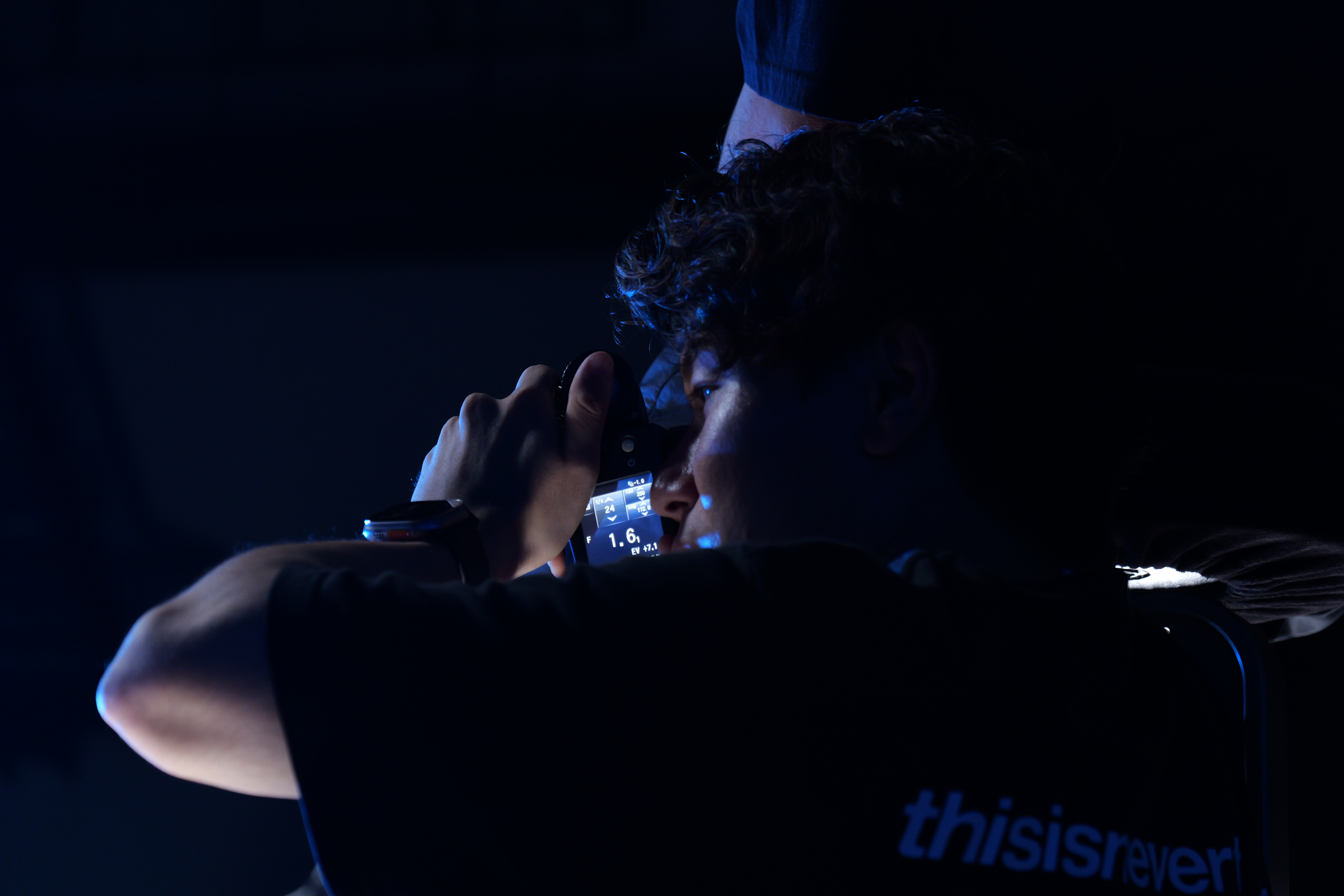
The camera department chief taking a light reading to relay exposure to the cinematographer.
Modern digital cameras often boast 15 stops or more of dynamic range. It’s easy to assume this makes light meters unnecessary—but in reality, the opposite is true.
Taking full advantage of wide dynamic range requires careful design decisions: where to place highlights, how much shadow detail to preserve, and how to balance the scene.
Light meters and color meters provide the numerical foundation for these creative choices, making them indispensable tools for professionals.
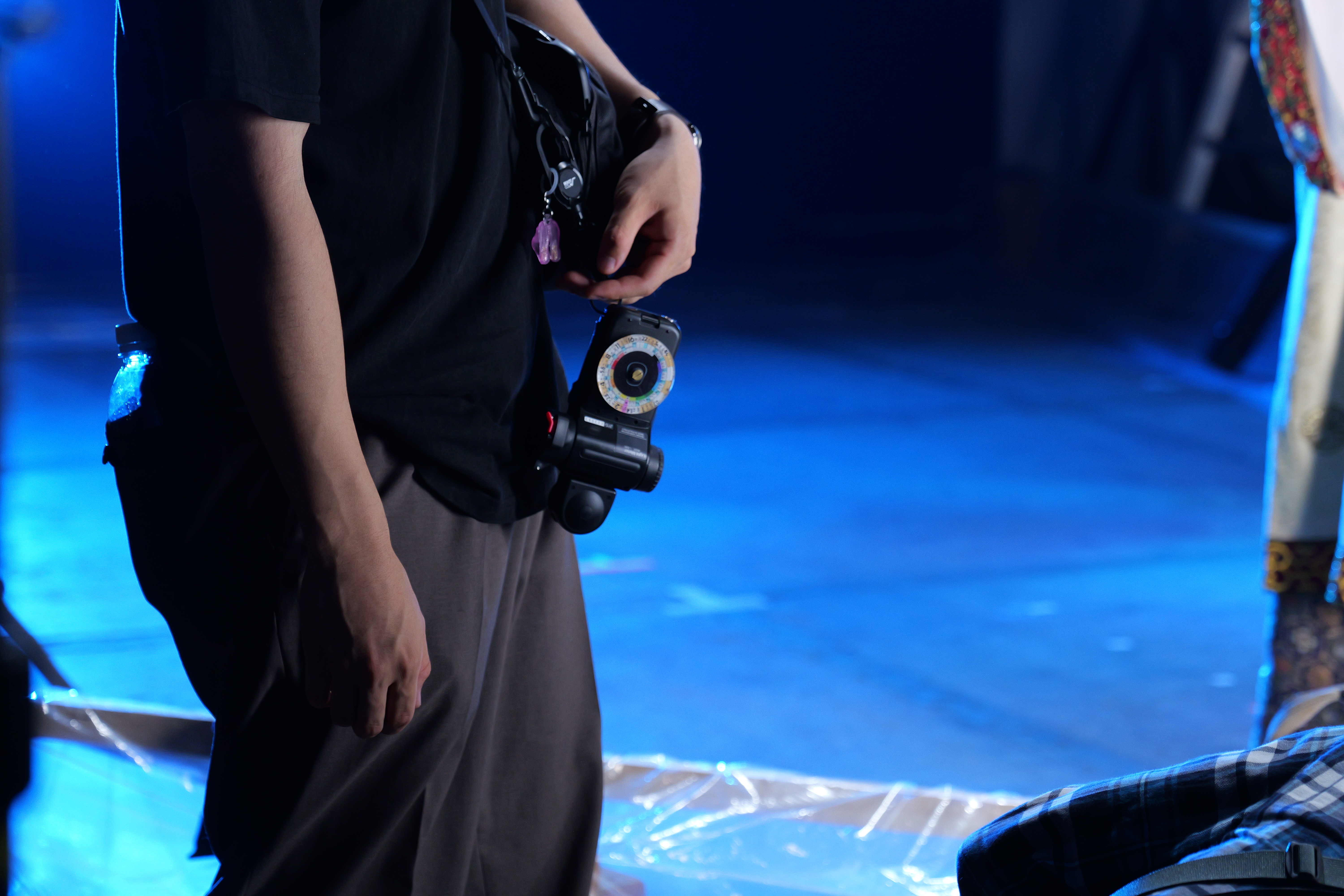
Coming Up Next
In the next installment:
“Learning from Film: How SEKONIC Ensures Precision in Exposure and Color” — featuring an inside look at the au Santaro commercial series, a long-running and well-known television campaign in Japan and one of the few remaining large-scale productions still shot on film.
Stay tuned!